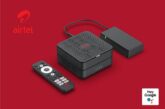
Your face isn’t the only place where acne can appear. It can affect any body part that has oil-secreting glands or hair follicles, including your back, chest, and shoulders, according to the Mayo Clinic.
Back acne — sometimes referred to as “bacne” — can be particularly troublesome.
While facial acne affects most people at some point in life, some will also struggle with back acne and even chest acne. In fact, back acne affects more than half of people with acne.
Back acne treatment can be challenging, so it helps to understand the types of acne lesions that can occur on your back, which include:
- WhiteheadsAlso referred to as closed comedones, whiteheads develop when a plugged follicle stays closed and underneath your skin, forming a white bump.
- BlackheadsWhen a plugged follicle located on the surface of your skin opens, it forms a blackhead, also referred to as an open comedone. The black-tip appearance of blackheads is due to a reaction between sebum and the air, not because dirt has filled your follicle.
- PapulesAcne lesions that appear as small pink bumps on your skin, and are sometimes tender, are called papules. This type of acne doesn’t contain pus, and it forms when a clogged hair follicle becomes inflamed.
- Pustules Also called a pimple, a pustule is a white or yellow pus-filled papule with a reddened base. These lesions also result from inflammation in a clogged hair follicle. A buildup of white blood cells causes the pustule to fill with pus.
- Nodules This type of acne forms when bacteria also become trapped in a hair follicle. These lesions develop deep below the surface of your skin, where it hardens and forms a large, painful nodule. The deeper location of the lesion causes tissue damage, resulting in an inflammatory response.
- Cysts Cysts are larger, pus-filled acne lesions that also form when bacteria become trapped in a hair follicle. With cystic acne, the infection extends deeper into the skin, resulting in a painful lump that can cause a permanent scar.
4 Steps You Can Take Toward Preventing Back Acne
- You can’t always control whether you get back acne because the main factors that predispose one to “bacne” — hormonal fluctuations and genetics — are out of your control.
- You can, however, take steps to reduce your chances of developing these lesions.
1. Avoid Certain Medications
- Some drugs, including androgens (male hormones like testosterone) and lithium, are known to increase your chances of developing acne. If you take any of these medications, talk with your doctor about possible alternative treatments.
2. Limit Your Use of Oil-Based Skin-Care Products
- Try not to use skin-care products with oil, including moisturizers and cosmetics, on your back. These can lead to back acne flare-ups. Also, the American Academy of Dermatology advises looking for products labeled noncomedogenic, meaning they are unlikely to clog pores.
3. Eliminate Pressure on Your Back
“Anything that results in increased sweating and friction on your back, such as backpacks, sports gear, and back braces, can cause back acne,” says Dr. Shah.
4. Wear Clean Clothes
“Dirty clothes can harbor sweat, oil, and dirt, further irritating the skin and contributing to the development of acne,” notes Shah. “It’s always best to wear loose clothing during exercise and to remove sweaty clothing after a workout.”
hah recommends choosing a backpack that’s lightweight and fits properly to minimize friction and irritation.
If you wear sports equipment (like shoulder pads) that puts pressure on your back, don’t wear the item for longer than you need to, or wear a clean cotton T-shirt underneath to reduce prolonged pressure and friction.




